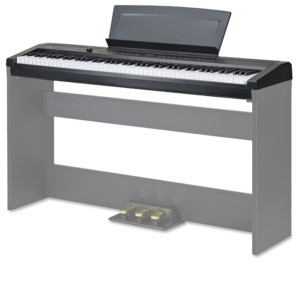Basic Guitar Techniques
In the previous article, we talked about methods of sound production, that is, about the basic techniques of playing the guitar. Well, now let’s take a closer look at the playing techniques with which you can decorate your performance.
You should not overuse embellishment techniques; their excess in a play most often indicates a lack of taste (unless the style of the piece being performed requires it).
It is worth noting that some of the techniques do not require training before performing – they are quite simple even for a novice guitarist. Other techniques will have to be rehearsed for some time, brought to the most perfect execution.
Glissando
The simplest technique that you probably know about is called glissando. It is performed as follows: place your finger on any fret of any string, produce a sound and smoothly move your finger several frets forward or backward (depending on the direction, the glissando is called ascending and descending).
Please note that in some cases the last sound of the glissando should be duplicated (that is, plucked) if the piece being performed requires it.
Pizzicato
On string instruments pizzicato – This is a way of producing sound with your fingers. Guitar pizzicato imitates the sound of a violin finger playing method, and therefore is often used in classical music.
Place the edge of your right palm on the guitar bridge. The flesh of your palm should slightly cover the strings. Leaving your hand in this position, try to play something. The sound should be muted equally on all strings.
Try this technique on an electric guitar. When choosing a heavy metal effect, pizzicato will help you control the sound delivery: its volume, sonority and duration.
Tremolo
Repeated repetition of the sound performed by the tirando technique is called tremolo. On a classical guitar, the tremolo is performed by alternating movements of three fingers. In this case, the thumb performs the support or bass, and the ring-middle-index finger (in that order) performs the tremolo.
A great example of a classic guitar tremolo can be seen in the video of Schubert’s Ave Maria.
On an electric guitar, tremolo is performed with a plectrum (pick) in the form of quick up and down movements.
Flagolet
One of the most beautiful techniques for playing the guitar is flagolet. The sound of the harmonic is slightly dull and at the same time velvety, stretching, somewhat similar to the sound of a flute.
The first type of harmonics is called natural. On a guitar it is performed on the V, VII, XII and XIX frets. Gently touch the string with your finger above the nut between the 5th and 6th frets. Do you hear a soft sound? This is a harmonic.
There are several secrets to successfully performing the harmonic technique:
- do not hold your finger on the string – do not interfere with its vibration;
- if possible, make the sound using the apoyando technique;
- In order for the harmonic to turn out bright, move your right hand to the stand and then make a sound.
Artificial the harmonic is more difficult to extract. However, it allows you to expand the sound range of using this technique.
Press any fret on any guitar string (let it be the 1nd fret of the 12st string). Count out XNUMX frets and mark for yourself the resulting place (in our case, it will be the nut between the XIV and XV frets). Place the index finger of your right hand in the marked place, and pull the string with your ring finger. That’s it – now you know how to play an artificial harmonic.
The following video perfectly shows all the magical beauty of the harmonic.


Watch this video on YouTube
Some more tricks of the game
Flamenco style is widely used golpe и tambourine.
Golpe is tapping the soundboard with the fingers of the right hand while playing. Tambourine is a stroke of the hand on the strings in the vicinity of the bridge. Tambourine plays well on electric and bass guitar.
Shifting a string up or down a fret is called a bend technique (in common parlance, a tightening). In this case, the sound should change by half or one tone. This technique is almost impossible to perform on nylon strings; it is more effective on acoustic and electric guitars.
Mastering all the techniques listed in this article is not that difficult. By spending a little time, you will enrich your repertoire and add some zest to it. Your friends will be pleasantly shocked by your performing abilities. But you are not obliged to give them your secrets – even if no one even knows about your little secrets in the form of guitar playing techniques.



